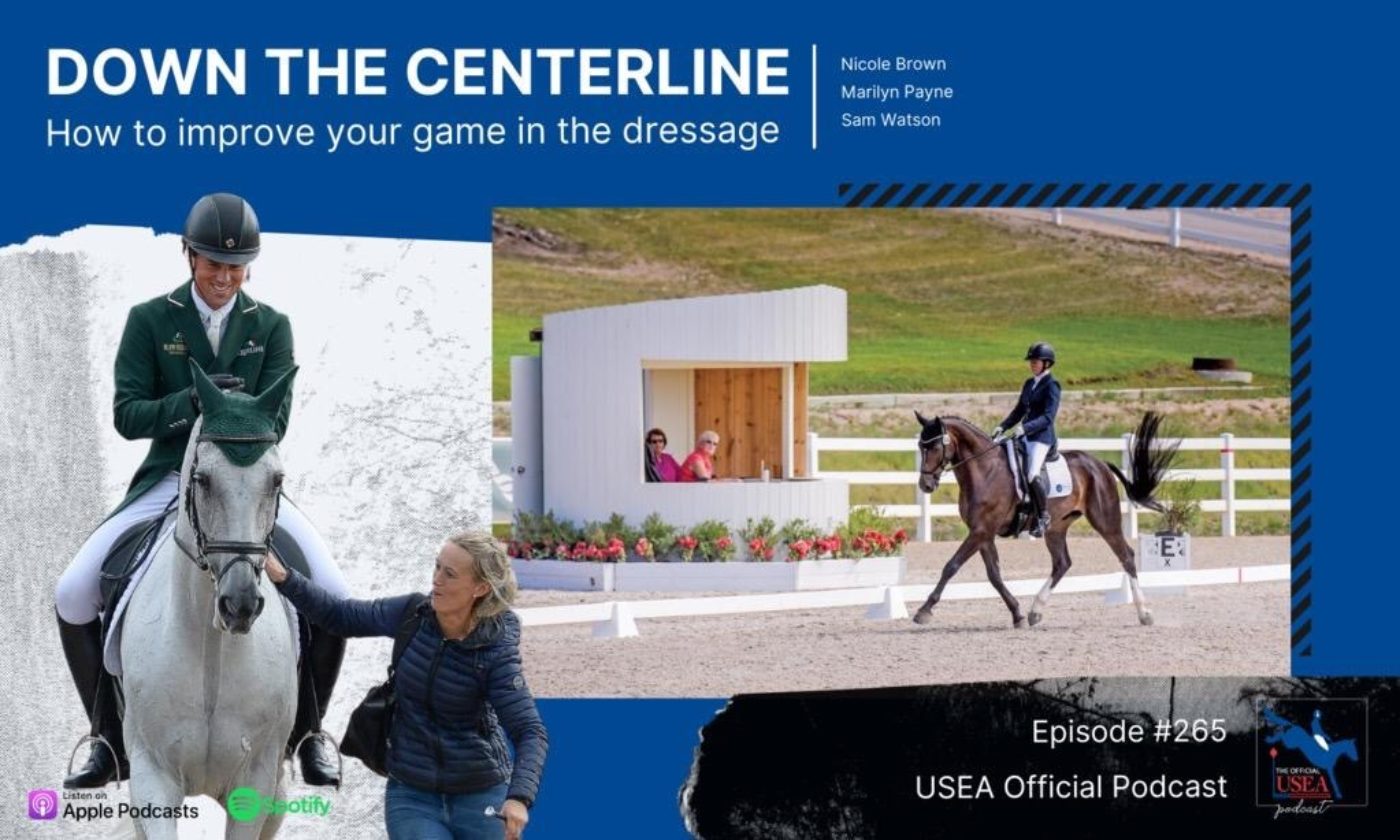Nicole Brown is joined this week on the USEA Podcast by Marilyn Payne, who was the President of the Ground Jury at the 2016 Olympics, is a member of the FEI Eventing Committee, and has officiated at major championships all over the world, and Irish five-star eventer Sam Watson, who has represented Ireland at three FEI World Equestrian Games, to discuss ways you can improve your performance in the dressage ring.
- A good test starts with the right warmup, and Payne says that will be different for each horse and rider. But, there are a few things that every combination needs to be successful – a horse in front of the rider’s leg, paying attention to the rider, supple and loose. Payne said it’s not about performing the movements in preparation, but about the quality of the horse’s gaits and way of going.
- Don’t forget to use going around the outside of the dressage court as part of your warm-up. The judge will not begin to judge you until you’re coming down centerline, so make the best use of that time to get your horse really tuned up and paying attention before going in to perform your test.
- Watson adds, “Let the horse warm up.” Comparable to how you feel when you roll out of bed in the morning, most horses are not ready to display their best movements the second they step into the warm-up. Give them the time to warm up adequately before you ask them to really perform. Don’t overdo it!
- Once the test has begun, Payne says the judges are looking for a few key things. A good first impression can be made with a good first trip down the centerline as it sets the stage for the test. Similarly, the final impression you give on the last centerline and halt can have a subconscious effect on the judge’s marks.
- Watson asserts that practice makes perfect. If you ride at home to the best of your capability, then when you get to the event and it’s time to perform it won’t be a shock to you or your horse.
- When you do practice your test at home, do it with purpose. Watson suggests having someone record a video and get feedback from a coach on how you can make improvements. “Don’t practice your mistakes.”
- When things start to go wrong, Payne said, “Ride like you would at home.” If the horse is acting up or behind your leg, Payne wants to see the rider make a correction to improve the horse’s way of going. Each movement is scored separately so you can always make changes and improvements.
- For Watson, trust between horse and rider is a huge factor in performance. When the horse trusts the rider, they are more likely to put forth their best effort when the rider asks them.
- It’s important to really know your test, down to the letter, says Watson, because there are some movements that are quicker or easier than others and can be good ways to boost your score if you can execute those movements really well.
- Watson said that his motto for riding is, “Ride, fail, learn.” So, when the test is complete and you have the judge’s comments in hand, it’s important to take a look at those comments and find out where you can learn from your mistakes. Payne says, “Every judge has something helpful to say.”
- Payne and Watson discuss the effect of multiple judges judging a single test and how even small splits in the points can add up over the course of the test.
- When it comes to turnout, Payne says judges typically only pay attention to it when a combination looks disheveled or over the top. A neat and tidy combination gives a good first impression to the judge – you never want your turnout to distract from the work you’re putting in!
- In closing, Payne and Watson each share their top three tips for a good test, from the judge’s and the rider’s perspectives. You’ll have to listen in to see what they suggest!
- Want more? Check out Marilyn Payne’s article in the most recent edition of Eventing USA, available online for USEA members.
Subscribe to the USEA Official Podcast on Apple Podcasts, Spotify, PodBean, or Stitcher, or click below to listen in!
